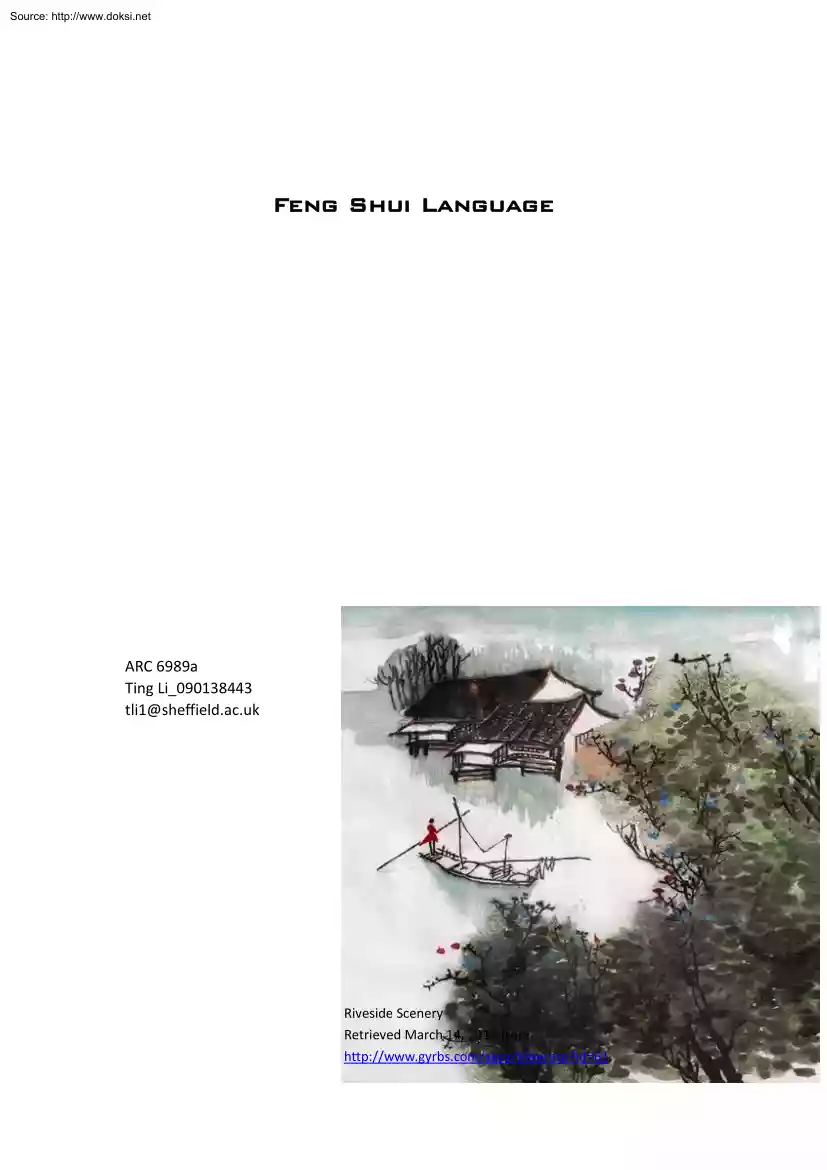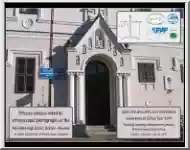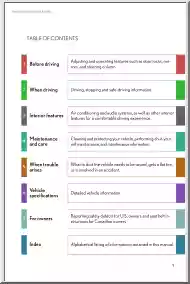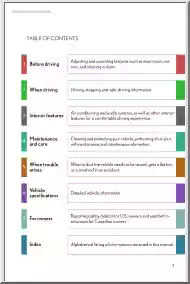Értékelések
Nincs még értékelés. Legyél Te az első!
Mit olvastak a többiek, ha ezzel végeztek?
Tartalmi kivonat
Source: http://www.doksinet Feng Shui Language ARC 6989a Ting Li 090138443 tli1@sheffield.acuk Riveside Scenery Retrieved March 14, 2010 from http://www.gyrbscom/xgyy/Viewasp?id=61 1 Source: http://www.doksinet Abstract Aims to discover Feng Shui emphasizes harmony with nature and surroundings and makes a significant contribution to design in China for many centuries, more specifically, recommends Feng Shui concepts and principles to western culture. Claims that Feng Shui is still a useful design tool for creating an ideal space of modern building and Feng Shui building types do have similar considerations and a linkage with scientific design methods. Hopes that Feng Shui as a traditional wisdom could benefit modern society. Zhuge Bagua Village Retrieved March 16, 2010 from http://hj.zjcn/post/%E8%AF%B8%E8%91%9B%E5%85%AB%E5%8D%A6%E6%9D%91html 2 Source: http://www.doksinet Introduction As we discussed a definition of Feng Shui, according to Longman Dictionary of Contemporary
English (Summers et al., 2007), “a Chinese system of organizing the furniture and other things in a house or building in a way that people believe will bring good luck and happiness” (p.584) Describing the roots of Feng Shui, Rossbach (1984) stated, “The Chinese saw a magical link between man and the landscape: nature reacts to any change and that reaction resounds in man”. The concept and practice of Feng Shui can be dated back as early as the fourth century BC, based on Taoism – one of the Chinese traditional religions (Needham, 1962 cited in Yu, 1994). In history, Feng Shui was widely utilized throughout China by the emperor as well as the masses, both the sacred and the profane (Yu, 1994). Even in ancient times, Feng Shui spread into other Asian country, such as Japan, Singapore, Korea, and Malaysia. Now, in some western countries, Feng Shui has become a subject for scientists and philosophers to study. This essay intends to explore the value of this traditional design
methodology by scientific analysis and merge of this eastern design theory with modern western building methods. 3 Source: http://www.doksinet Understanding of Feng Shui Feng Shui included knowledge accumulated over 3000 years in China (Hobson, 1994). Lai Chuen Yan (1963) defined that Feng Shui as being “a mystical combination of Chinese philosophical, religious, astrological, cosmological, mathematical and geographical concepts” (p.30) The literal meaning of “Feng” is wind and “Shui” is water. Wind and water are carrying and transferring Qi. Furthermore, Qi can be divided into Yin Qi and Yang Qi Yin means dark, cold, feminine and infirm. While, Yang represents bright, warm, masculine and powerful. Yin and Yang are interdependent and interrelated. Thus, without dark, we do not know what is light Without heat, we do not know what is cold. Yang Yin Day Night Sky Earth Sun Moon Activity Rest Motion Stillness High Low Hot Cold Fire Water Mountain Male
YIN and YANG Concept River (Too, p.51) Female Lip (1979) stated, “Good life is supposed to be achieved by man when he is in harmony with the flux of Yin and Yang”. Achieving the balance between Yin Qi and Yang Qi for human comfort is the central concern of Feng Shui (Too, 1997). The 4 Source: http://www.doksinet concept of Qi and the theory of Yin Yang have been closely linked by harmony and balance (Zhong & Ceranic, 2007). The core principle of Feng Shui is that of harmony between human and nature. Different philosophies all emphasise the wisdom of a balanced environment (Huang, 2001 cited in Zhong & Ceranic, 2007). That is to say, the essence of Feng Shui is to create balance and harmony between human beings and environment, even the universe. Furthermore, the criteria used in selecting the ancient settlements location and modifying social life in ancient China reflect Feng Shui principles and theory (Zhong & Ceranic, 2007). In ancient China, people considered
that humanity should always keep to Feng Shui’s guidelines to choose a place for living. Chinese used the Four Animal theory to define the directions and landforms on earth. This is the foundation of Form School Theory. The Four Animal theory which include the Azure Dragon, Red Phoenix, White Tiger and Black Tortoise is derived from the discoveries of ancient Chinese astronomy. The Four Animals could represent East, South, West, and North. The Form School is based on the understanding of natural condition of the site and its surrounding environment. The first step in practicing Form Theory is to observe the structure of the land and terrain. The second is to decide the orientation and 5 Source: http://www.doksinet location of the building. The "box within box" Theory is a holistic Feng Shui model of the ideal landscape which contains four types of topological characters: Ming Tang, Qi Vein, Water Mouth and the Feng Shui spot. The feng shui spots are surrounded by
mountains (Qi Vein), connected with the outside by the gate (Water Mouth) and located behind a flat area (Ming Tang). The Feng Shui spot means the best location for the city or country. The outlet of the city or country would be the Water Mouth The barrier mountain is the primary Qi Vein. Furthermore, Ming Tang provides great vision for the Feng Shui spot (Yu, 1994). 6 Source: http://www.doksinet Ideal feng shui models By feng shui ways, there are three typical site models in site planing and design, which are consisted of the four-sided enclosed site, the half-enclosed site and the site between mountain and water(Fang, 2000). All of these models follow the principles of the Form School. The Four-sided Enclosed Site This kind of site may be threatened by flood during the rainy season, so in this model, the ancient chinese would choose the location where the ground lever is higher. Moreover, the cave should be located halfway up, where the elevations above Ming Tang and Chi is
harmoniously balanced by Ying and Yang (Fang, 2000). In this Feng Shui design, there are multiple layers of construction and each of these layers of construction obtains its own Feng Shui pattern. Furthermore, the direction of the building always faces the sun but has an angle which helps to reduce over heating during the summer (Fang, 2000). The Half-Enclosed Feng Shui Site Also called “Armchair Mountain Formation”, the half closed mountain can block cold wind from the north and west and allow summer breezes to enter from the south. Therefore, the landscape architecture elements of this Feng Shui model usually face 7 Source: http://www.doksinet to the south with a pond or stream in front of it and with mountains behind it. This provides locations with a favorable microclimate (Fang, 2000). A Feng Shui Site Between Mountain and Water According to this Feng Shui model, one of the best spots for a building is a location halfway up a south-facing slope to absorb the maximum
winter solar radiation and avoid the high speed winds of the hilltops. Moreover, vegetation and a pond are the most significant natural elements on this site plan, which might even change the micro-bioclimate of the area. Vegetation provides shade in summer while the pond and stream make evaporative cooling for the prevailing summer wind (Fang, 2000). 8 Source: http://www.doksinet Feng shui in building design Using Feng Shui to design buildings seeks the harmony between human and nature. Therefore, buildings are designed by following the natural condition of the site, such as local climate, vegetation, and topography (Fang, 2000). Present four traditional Feng Shui building styles, Si He Yuan, Yao Dong, Hakka building and DiaoJiao house. These buildings are widely distributed in China; furthermore, the climate and natural environment are different in their areas. According to different Feng Shui conditions, buildings have their especial styles. Si He Yuan Si He Yuan is defined
four-sided closed courtyard and occurs in the big cities of China where residents need more security and have less access to the natural environment. Besides following opportune direction, Si He Yuan also gain more sunlight from design and utilize material selection to achieve rational utilization of natural energy. Si He Yuan’s windows on the interior walls are bigger than the windows facing exterior. From this way, not only the interior space gain more sunlight from the courtyard, but also the cold wind is prevented. In addition, the exterior walls made by local thermal mass materials, thick enough to keep adequate heat energy and block the winter wind from the north. 9 Source: http://www.doksinet Layout of Si He Yuan Retrieved March 16, 2010 from http://www.chinacomcn/aboutchina/ zhuanti/mtlddf/2008-03/24/content 13419110.htm The Exterior Door of Si He Yuan Retrieved March 16, 2010 from http://www.hottoocom/Article/shy /200804/20257.html Yao Dong Yao Dong style is used in
the northwestern of China where the climate is arid and windy, and the topography is very mountainous. Considering these natural conditions, Yao Dong is built on the slope of hills through excavating mountains for interior space facing the south. This building can avoid the prevailing wind in the winter and construct dry interior space. This building was developed according to the local topography and climatology. Furthermore, the flat land in front of the building becomes a reflector to gain enough sunlight and better air flow (Fang, 2000). 10 Source: http://www.doksinet Moreover, this building style excellently holds the sustainable and economical concepts by utilizing the ground and mountain as the building wall (Fang, 2000). Yao Dong Retrieved March 16, 2010 from http://lvyou.ecogovcn/guonei/7/2/3/2009/ 1120/6260.html Yao Dong Retrieved March 16, 2010 from http://tupian.hudongcom/a4 12 95 01300000043165121584951737184 jpghtml Hakka Building 11 Source: http://www.doksinet
Hakka buildings were developed when the Hakka migrated to the south of China from central China between the third and fourth centuries. The form of this building is a square or round fortress; most are round. Hakka buildings can provide living space for hundreds of people. Located in the summer storm zone, the building with round form can reduce the damage of wind. Generally speaking, most windows and doors of the rooms open inward and the main entrance faces south. In the exterior walls, there are only a few entrances, which contribute to defend the enemy from outside (Lou, 2002). Hakka house Retrieved March 16, 2010 from http://www.showchinaorg/zjsz/jxzh/03/200907/t369189htm 12 Source: http://www.doksinet DiaoJiao House DiaoJiao houses are distributed in the southeastern and southwestern of China. In these areas, topography is very complex and open flat land is quite few. Besides, the climate is sweltering and moist. DiaoJiao houses are built on wooden or bamboo stilts according
to the rise and fall of the landform (Lou, 2002). Therefore, DiaoJiao houses provide a dry and safe space as well as better air flow. Typically, these houses have open corridors and daily activities areas with overhanging eaves in front of the rooms. DiaoJiao House Retrieved March 16, 2010 from http://www.doyouhikenet/city/beijing//293259,0,0,7html 13 Source: http://www.doksinet DiaoJiao House Retrieved March 16, 2010 from http://www.szyocom/blog/archives/220html Conclusion This essay does suggest to merge of this eastern design theory with modern western building methods to benefit modern society; furthermore, it is a useful design tool for creating an ideal environment and space of building. 14 Source: http://www.doksinet BIBLIOGRAPHY Fang, Z. (2000) Feng Shui in Site Planning and Design: A New Perspective for Sustainable Development Thesis (master) Arizona State University, Tempe. Lip, E. (1979), Feng Shui, Chinese Colours and Symbolism Journal of the Singapore Institute
of Architects. Lou, Q. (2002) Ancient Chinese Architecture, Beijing: Foreign Language Press Rossbach, S. (1984), Feng Shui, Rider, London Summers, D. et al, (2007) Longman Dictionary of Contemporary English (10th edition) England: Edinburgh Gate. Too, L. (1997) The Complete Illustrated Guide to Feng Shui, Shaftesbury, Great Britain: Element Books Inc. Yan, L.C (1963) A Feng Shui Model as a Location Index Annals of the Association of American Geographers 64/4, 23-45. Yu, K. J (1994) Landscape into Places: Feng Shui Model of Place Making and Some Cross-cultural Comparisons available from: http://www.gslapkueducn/frame/jgzx/lwjj/lwwh07htm [Accessed 15 March 2010] Zhong, Z.Q and Ceranic B (2007) FengShui – A Systematic Research of Vernacular Sustainable Development in Ancient China and its Lessons for Future available from: http://www.care-ukorg/care07/content/pdf/zhong%20zhiqinpdf[Accessed 12 March 2010] 15
English (Summers et al., 2007), “a Chinese system of organizing the furniture and other things in a house or building in a way that people believe will bring good luck and happiness” (p.584) Describing the roots of Feng Shui, Rossbach (1984) stated, “The Chinese saw a magical link between man and the landscape: nature reacts to any change and that reaction resounds in man”. The concept and practice of Feng Shui can be dated back as early as the fourth century BC, based on Taoism – one of the Chinese traditional religions (Needham, 1962 cited in Yu, 1994). In history, Feng Shui was widely utilized throughout China by the emperor as well as the masses, both the sacred and the profane (Yu, 1994). Even in ancient times, Feng Shui spread into other Asian country, such as Japan, Singapore, Korea, and Malaysia. Now, in some western countries, Feng Shui has become a subject for scientists and philosophers to study. This essay intends to explore the value of this traditional design
methodology by scientific analysis and merge of this eastern design theory with modern western building methods. 3 Source: http://www.doksinet Understanding of Feng Shui Feng Shui included knowledge accumulated over 3000 years in China (Hobson, 1994). Lai Chuen Yan (1963) defined that Feng Shui as being “a mystical combination of Chinese philosophical, religious, astrological, cosmological, mathematical and geographical concepts” (p.30) The literal meaning of “Feng” is wind and “Shui” is water. Wind and water are carrying and transferring Qi. Furthermore, Qi can be divided into Yin Qi and Yang Qi Yin means dark, cold, feminine and infirm. While, Yang represents bright, warm, masculine and powerful. Yin and Yang are interdependent and interrelated. Thus, without dark, we do not know what is light Without heat, we do not know what is cold. Yang Yin Day Night Sky Earth Sun Moon Activity Rest Motion Stillness High Low Hot Cold Fire Water Mountain Male
YIN and YANG Concept River (Too, p.51) Female Lip (1979) stated, “Good life is supposed to be achieved by man when he is in harmony with the flux of Yin and Yang”. Achieving the balance between Yin Qi and Yang Qi for human comfort is the central concern of Feng Shui (Too, 1997). The 4 Source: http://www.doksinet concept of Qi and the theory of Yin Yang have been closely linked by harmony and balance (Zhong & Ceranic, 2007). The core principle of Feng Shui is that of harmony between human and nature. Different philosophies all emphasise the wisdom of a balanced environment (Huang, 2001 cited in Zhong & Ceranic, 2007). That is to say, the essence of Feng Shui is to create balance and harmony between human beings and environment, even the universe. Furthermore, the criteria used in selecting the ancient settlements location and modifying social life in ancient China reflect Feng Shui principles and theory (Zhong & Ceranic, 2007). In ancient China, people considered
that humanity should always keep to Feng Shui’s guidelines to choose a place for living. Chinese used the Four Animal theory to define the directions and landforms on earth. This is the foundation of Form School Theory. The Four Animal theory which include the Azure Dragon, Red Phoenix, White Tiger and Black Tortoise is derived from the discoveries of ancient Chinese astronomy. The Four Animals could represent East, South, West, and North. The Form School is based on the understanding of natural condition of the site and its surrounding environment. The first step in practicing Form Theory is to observe the structure of the land and terrain. The second is to decide the orientation and 5 Source: http://www.doksinet location of the building. The "box within box" Theory is a holistic Feng Shui model of the ideal landscape which contains four types of topological characters: Ming Tang, Qi Vein, Water Mouth and the Feng Shui spot. The feng shui spots are surrounded by
mountains (Qi Vein), connected with the outside by the gate (Water Mouth) and located behind a flat area (Ming Tang). The Feng Shui spot means the best location for the city or country. The outlet of the city or country would be the Water Mouth The barrier mountain is the primary Qi Vein. Furthermore, Ming Tang provides great vision for the Feng Shui spot (Yu, 1994). 6 Source: http://www.doksinet Ideal feng shui models By feng shui ways, there are three typical site models in site planing and design, which are consisted of the four-sided enclosed site, the half-enclosed site and the site between mountain and water(Fang, 2000). All of these models follow the principles of the Form School. The Four-sided Enclosed Site This kind of site may be threatened by flood during the rainy season, so in this model, the ancient chinese would choose the location where the ground lever is higher. Moreover, the cave should be located halfway up, where the elevations above Ming Tang and Chi is
harmoniously balanced by Ying and Yang (Fang, 2000). In this Feng Shui design, there are multiple layers of construction and each of these layers of construction obtains its own Feng Shui pattern. Furthermore, the direction of the building always faces the sun but has an angle which helps to reduce over heating during the summer (Fang, 2000). The Half-Enclosed Feng Shui Site Also called “Armchair Mountain Formation”, the half closed mountain can block cold wind from the north and west and allow summer breezes to enter from the south. Therefore, the landscape architecture elements of this Feng Shui model usually face 7 Source: http://www.doksinet to the south with a pond or stream in front of it and with mountains behind it. This provides locations with a favorable microclimate (Fang, 2000). A Feng Shui Site Between Mountain and Water According to this Feng Shui model, one of the best spots for a building is a location halfway up a south-facing slope to absorb the maximum
winter solar radiation and avoid the high speed winds of the hilltops. Moreover, vegetation and a pond are the most significant natural elements on this site plan, which might even change the micro-bioclimate of the area. Vegetation provides shade in summer while the pond and stream make evaporative cooling for the prevailing summer wind (Fang, 2000). 8 Source: http://www.doksinet Feng shui in building design Using Feng Shui to design buildings seeks the harmony between human and nature. Therefore, buildings are designed by following the natural condition of the site, such as local climate, vegetation, and topography (Fang, 2000). Present four traditional Feng Shui building styles, Si He Yuan, Yao Dong, Hakka building and DiaoJiao house. These buildings are widely distributed in China; furthermore, the climate and natural environment are different in their areas. According to different Feng Shui conditions, buildings have their especial styles. Si He Yuan Si He Yuan is defined
four-sided closed courtyard and occurs in the big cities of China where residents need more security and have less access to the natural environment. Besides following opportune direction, Si He Yuan also gain more sunlight from design and utilize material selection to achieve rational utilization of natural energy. Si He Yuan’s windows on the interior walls are bigger than the windows facing exterior. From this way, not only the interior space gain more sunlight from the courtyard, but also the cold wind is prevented. In addition, the exterior walls made by local thermal mass materials, thick enough to keep adequate heat energy and block the winter wind from the north. 9 Source: http://www.doksinet Layout of Si He Yuan Retrieved March 16, 2010 from http://www.chinacomcn/aboutchina/ zhuanti/mtlddf/2008-03/24/content 13419110.htm The Exterior Door of Si He Yuan Retrieved March 16, 2010 from http://www.hottoocom/Article/shy /200804/20257.html Yao Dong Yao Dong style is used in
the northwestern of China where the climate is arid and windy, and the topography is very mountainous. Considering these natural conditions, Yao Dong is built on the slope of hills through excavating mountains for interior space facing the south. This building can avoid the prevailing wind in the winter and construct dry interior space. This building was developed according to the local topography and climatology. Furthermore, the flat land in front of the building becomes a reflector to gain enough sunlight and better air flow (Fang, 2000). 10 Source: http://www.doksinet Moreover, this building style excellently holds the sustainable and economical concepts by utilizing the ground and mountain as the building wall (Fang, 2000). Yao Dong Retrieved March 16, 2010 from http://lvyou.ecogovcn/guonei/7/2/3/2009/ 1120/6260.html Yao Dong Retrieved March 16, 2010 from http://tupian.hudongcom/a4 12 95 01300000043165121584951737184 jpghtml Hakka Building 11 Source: http://www.doksinet
Hakka buildings were developed when the Hakka migrated to the south of China from central China between the third and fourth centuries. The form of this building is a square or round fortress; most are round. Hakka buildings can provide living space for hundreds of people. Located in the summer storm zone, the building with round form can reduce the damage of wind. Generally speaking, most windows and doors of the rooms open inward and the main entrance faces south. In the exterior walls, there are only a few entrances, which contribute to defend the enemy from outside (Lou, 2002). Hakka house Retrieved March 16, 2010 from http://www.showchinaorg/zjsz/jxzh/03/200907/t369189htm 12 Source: http://www.doksinet DiaoJiao House DiaoJiao houses are distributed in the southeastern and southwestern of China. In these areas, topography is very complex and open flat land is quite few. Besides, the climate is sweltering and moist. DiaoJiao houses are built on wooden or bamboo stilts according
to the rise and fall of the landform (Lou, 2002). Therefore, DiaoJiao houses provide a dry and safe space as well as better air flow. Typically, these houses have open corridors and daily activities areas with overhanging eaves in front of the rooms. DiaoJiao House Retrieved March 16, 2010 from http://www.doyouhikenet/city/beijing//293259,0,0,7html 13 Source: http://www.doksinet DiaoJiao House Retrieved March 16, 2010 from http://www.szyocom/blog/archives/220html Conclusion This essay does suggest to merge of this eastern design theory with modern western building methods to benefit modern society; furthermore, it is a useful design tool for creating an ideal environment and space of building. 14 Source: http://www.doksinet BIBLIOGRAPHY Fang, Z. (2000) Feng Shui in Site Planning and Design: A New Perspective for Sustainable Development Thesis (master) Arizona State University, Tempe. Lip, E. (1979), Feng Shui, Chinese Colours and Symbolism Journal of the Singapore Institute
of Architects. Lou, Q. (2002) Ancient Chinese Architecture, Beijing: Foreign Language Press Rossbach, S. (1984), Feng Shui, Rider, London Summers, D. et al, (2007) Longman Dictionary of Contemporary English (10th edition) England: Edinburgh Gate. Too, L. (1997) The Complete Illustrated Guide to Feng Shui, Shaftesbury, Great Britain: Element Books Inc. Yan, L.C (1963) A Feng Shui Model as a Location Index Annals of the Association of American Geographers 64/4, 23-45. Yu, K. J (1994) Landscape into Places: Feng Shui Model of Place Making and Some Cross-cultural Comparisons available from: http://www.gslapkueducn/frame/jgzx/lwjj/lwwh07htm [Accessed 15 March 2010] Zhong, Z.Q and Ceranic B (2007) FengShui – A Systematic Research of Vernacular Sustainable Development in Ancient China and its Lessons for Future available from: http://www.care-ukorg/care07/content/pdf/zhong%20zhiqinpdf[Accessed 12 March 2010] 15




